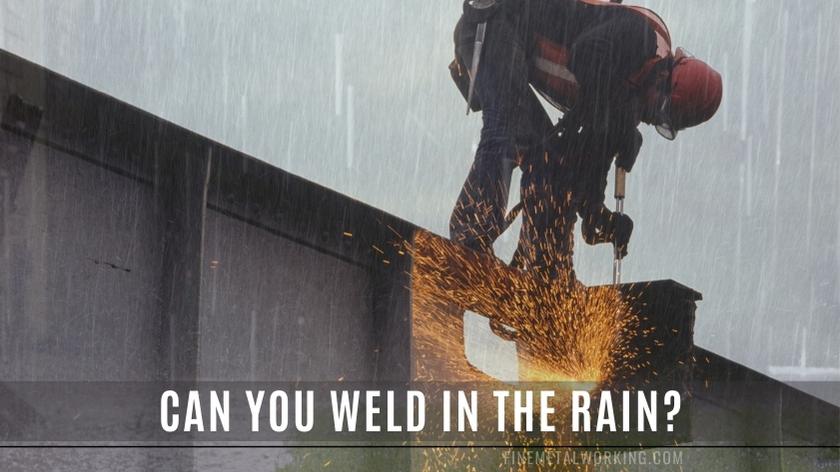We all know that welding is not a wet job. But, What do you do if you are exposed to rain while welding? Should you continue, and is it safe to weld in the rain?
If you’re trying to answer these questions yourself, we’ve got your back. In this article, we’ll talk about how welding can be done safely in wet conditions and what precautions should be taken when it’s raining.
Page Contents
Is it Safe to Weld in the Rain?
In short no; it is definitely not a safe practice to be welding in the rain. This is because the energy source of welding, which is electricity, is active throughout the process of welding.
When welding begins, an electrical current flows from the welding machine and into the subjective steel workpiece, which then flows back to the welder again through an earth clamp. As there is a lot of actively flowing electricity present there is always a chance to be electrocuted as a welder operator; however, by putting water in the middle it really is asking for injury.
Can You Stick Weld in the Rain?
Welding uncovered in rain is possible, but the overall welding performance and quality will be greatly reduced.
Firstly, if you are welding outside, you would be using a stick welder or gasless MIG welder as these are the only welding machines that can be used without gas (welding gas protects your weld pool from contamination and it can’t do this if it blows away in the wind). Both stick welding electrodes and gasless MIG wire have a flux core coating, which acts as an alternative to shielding gases. When this coating on the electrodes becomes wet, defects such as porosity (weld holes) are highly likely to occur, which will affect the overall structural integrity and durability of the weld.
Alongside this, water present in or around the weld pool will likely increase the probability of instability. The weld pool will likely pop and splatter when it makes contact with a lot of water where it usually wouldn’t, and this will result in the final weld joint looking messy and uneven.
Finally, water will have a significant effect on the temperature of the weld. The rainwater is likely to cool the weld overly fast which will reduce effective penetration of the weld and structural integrity aspects.
So, if you are planning to begin to weld in the rain or any wet environment, consider the alternatives if your intention is to lay a good quality weld.
How to Weld Safely in the Rain?
There may be a moment when welding in the rain becomes unavoidable. If this happens to be your situation, consider taking some of the following actions to weld safely and successfully.
1. Use a Shelter
Make use of a portable or temporary shelter which is ideally made from fireproof material. The shelter should have a roof at a minimum, but if it has exterior walls even better. It needs to be large enough to stop the rain from landing on you, your welding machine, and the steel that you are about to weld. Assuming that it has been raining a lot, you may need to dry your steel before welding by using a towel, cloth, or blow torch to evaporate the water completely. By not removing the rainwater present on the steel, you are still at risk of electrocution and your shelter would be used for nothing.
2. Wear PPE
Wear your normal welding personal protection equipment (PPE). In particular, make use of welding gloves and rubber work boots as both of these pieces of safety gear are specifically designed to prevent electric shock. Some work boots are cheap and of bad quality. So make sure that they are in fact resistant to electricity before you consider welding in the rain. Your overalls, gloves, or welding sleeves shouldn’t be wet before you begin as if they are; they will conduct electricity and shock you.
3. Use Equipment in Good Condition
This generally goes for your welding setup and is especially important if you are to attempt to weld in a rainy, damp environment. Make sure all your cables and leads are free of tears and exposed wires as this will prove to be extremely dangerous if water enters these areas. Place your welding machine in a location where there is no water. You should avoid allowing water to enter your electrical equipment as you do not want to damage your expensive tools and have to fork out money to repair or replace them.
4. Simply Wait and be Patient
In conclusion, our number one recommendation is to wait and be patient. If welding needs to be done and it is raining, wait for the rain to cease and for the ground to dry. No contractor should be without choice in this situation, and no job is worth risking your health and safety.

